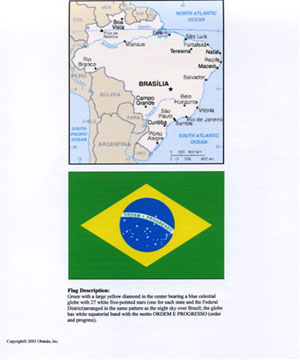|
|
|
"Cultures in a Box" by: Roya Ansari, the founder Navigate their site to find out more: www.culturesinabox.com
I decided that I must reach children and youth to educate them about other cultures, not just the Iranian culture or for that matter Middle Eastern or necessarily Islamic societies, but a global understanding of all cultures. Unfortunately sometimes the only introduction to a culture is through negative media, through war, destruction and natural disasters. I started a program as a volunteer in my son's class room (who at the time was in 2nd grade) and attended Belmont Oaks Academy in Belmont, California. The program was so successful where students wrote testimonials asking for it to be offered through out the school. The students' requests prompted the principal to ask me to develop a full program, and with the help and dedication of my good friend Souroor Milani we began to develop a cross-cultural educational program which schools have successfully integrated in their curricula. One of the most exciting aspects of life in the U.S. is the cultural mosaic that has brought people from all around the world to this country, and having grown up in Iran, Europe and the U.S., I believe we are very lucky to have diversity in our classrooms and our communities. We live in a global society; there are many different faces from around the world in our neighborhoods, classrooms and place of work. Therefore, we need to open our minds and our hearts to have a better understanding of the world so we can better connect with people. I have been asked why the name "Cultures in a Box"? Every element of this interactive program was placed in Rubbermaid boxes to be delivered to the schools (Musical instruments, Music CD, Cultural books, Folktale, Arts, Crafts, etc.),and the flag of each respective country was taped to the front of the box, so it was logical to name it Cultures in a Box. Today each culture is prepared and packaged in a binder which contains
the cultural CD lesson (an interactive flash based presentation of 50
I did not follow a particular model, but I had always thought that subjects such as geography, history, economics, and social studies are very important and unfortunately are not taught from early childhood in the U.S. I also think that for many children and adults for that matter, these subject matters could be very dry and boring since it requires a lot of text memorization. I wanted to create a program that was fun, interactive and also stimulating so children willingly take part in the world they live in from early childhood and become involved in matters that face them. Cultures in a Box is not a typical social studies class, it is rather a focused dialog on cultural diversity to facilitate the connection between children of different cultural backgrounds. It is a dialogue of civilizations. Cultures in a Box classes provide an open forum for children, teachers and parents around a certain culture. The discussion is enhanced with a rich display of pictures, sounds, and video clips of life in that particular country. A cultural bridge is created when children learn about the environment, landmarks, street scenes, popular animals and plants, shops, people, dress codes, religion, food, greeting habits, music, festivities, and language of the country. This is the needed foundation for cultural diversity from early childhood and key in promoting understanding. The differences and similarities between the subject country and the United States are highlighted with vivid images. This comparison sparks critical thinking among children and challenges them to take part in the world they live in. The class also encourages the students and their parents from the respective cultures to participate in sharing stories about their experience in the United States relative to the country they came from. By familiarizing children with different aspects of life in a culture, they come to appreciate, respect, and connect with people around the world.
Another wonderful story that was shared with us was the effect the program has made on an autistic child in this particular school. Cultures in a Box has provided this child an environment where he is now participating, dancing, and sharing the activities with his peers and does not feel aloof. The effect the program is making has gone beyond school campuses; we were told that a published article on our program in a local newspaper in a northern California city had impacted an apartment manager who was touched by the program where she made copies of the article for all the tenants in her building. The program has received tremendous attention from the press and media in northern California. It was featured 3 times on local CBS network and for the entire month of June on Comcast Local Edition, as well as an interview with Senator Liz Figueroa of Alameda County with me about our program was featured on Comcast. Bay Area news papers (San Jose Mercury, San Francisco Chronicle, San Mateo Daily, Palo Alto Weekly, Vision Magazine, Epoch Time and Bay Area Parent Magazine) have allocated coverage to this program.
View feature story, Cultures in a Box on CBS : www.culturesinabox.com/cbsenm.wmv
The program has sparked interest with policy makers, the staff of:
Congressman Tom Lantos, Senator Jackie Speier, Senator Elaine Alquist,
Cultures in a Box is connecting tomorrow's leaders to people around the world. We would like to ask the Iranian community to take part in helping us introduce this much needed program to their schools and communities. This is a global program, where all cultures are introduced beyond their place on the world map and their place in history; it is a humanistic view in introducing a culture and its people. As Iranian Americans we need to be instrumental in creating a world for the next generation to have better understanding and respect for all cultures so they can lead prosperous lives and societies.
http://sfindependent.com/article/index.cfm/i/062804n_ansari
|
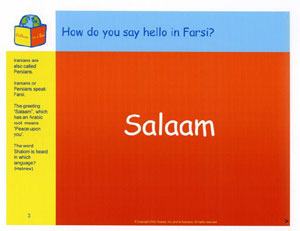 0
0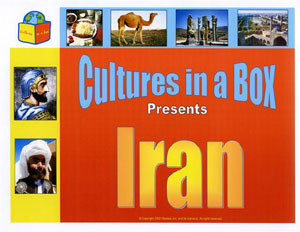
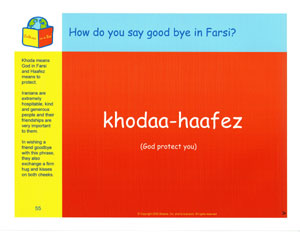
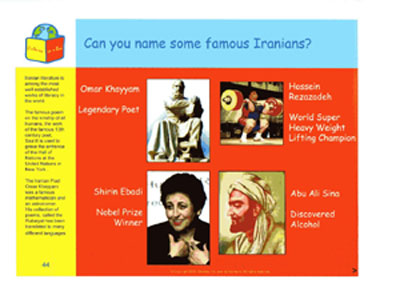 After
the horrific events of September 11th 2001, I began to see the rise
of cultural misconceptions and cultural stigmas with almost all cultures
of the world. It seemed that there was no room to embrace diversity,
but rather iron walls and barbed wires were being built out of fear
of diversity.
After
the horrific events of September 11th 2001, I began to see the rise
of cultural misconceptions and cultural stigmas with almost all cultures
of the world. It seemed that there was no room to embrace diversity,
but rather iron walls and barbed wires were being built out of fear
of diversity. 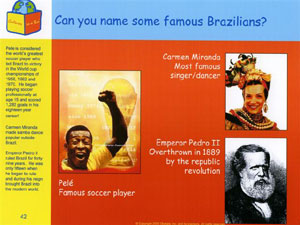 topics
with vivid images on each topic), music CD of the respective culture,
supporting materials such as teaching guide (before, during and after)
State Education Standards, suggested activities for each grade level,
map exercises, flag, currency, pictures of the musical instruments,
suggested cultural books and folk tales, lesson summary, and a recipe.
topics
with vivid images on each topic), music CD of the respective culture,
supporting materials such as teaching guide (before, during and after)
State Education Standards, suggested activities for each grade level,
map exercises, flag, currency, pictures of the musical instruments,
suggested cultural books and folk tales, lesson summary, and a recipe.
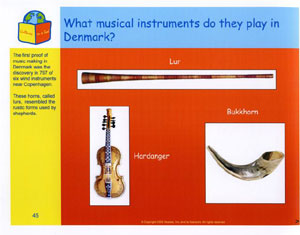 I was
told by few educators that the program is not only rich in content,
but it has sparked interest in children to continue research on the
Internet and has raised their enthusiasm in checking out cultural books
from their libraries. A teacher told us that the program is an experience
they share together; it is not often that you can get 9 or 10 year olds
to get up and dance in front of their peers, but through this program
a social experience is also created. The principal of one school told
me that since they started teaching this program, they have noticed
that matters of conflict due to cultural misunderstanding has been reduced,
not only among children but also with the school staff and school administrators.
I was
told by few educators that the program is not only rich in content,
but it has sparked interest in children to continue research on the
Internet and has raised their enthusiasm in checking out cultural books
from their libraries. A teacher told us that the program is an experience
they share together; it is not often that you can get 9 or 10 year olds
to get up and dance in front of their peers, but through this program
a social experience is also created. The principal of one school told
me that since they started teaching this program, they have noticed
that matters of conflict due to cultural misunderstanding has been reduced,
not only among children but also with the school staff and school administrators.
.jpg) Senator Liz Figueroa, and Senator Joe Simitian have met with me to help
introduce the program to educational leaders.
Senator Liz Figueroa, and Senator Joe Simitian have met with me to help
introduce the program to educational leaders.